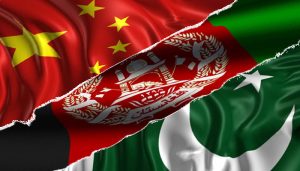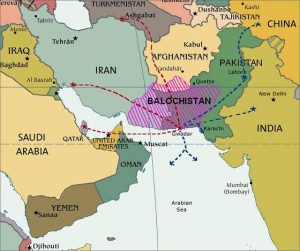TRUMP’S CLUELESS WAR IN AFGHANISTAN
By: Lawrence Sellin, Retired Colonel, U.S. Army Reserve
11/30/2018
Yes, it is President Trump’s war now, and he doesn’t know what to do about it. The bad news is: neither do those advising him.
So, the Trump administration has chosen to prolong the stalemate by continuing an expensive, exhaustive and entirely inappropriate counterinsurgency strategy in the desperate hope that the Taliban will be encouraged to join a peace process and agree to terms that will permit the United States to withdraw without the appearance of a humiliating American defeat.
Good luck with that.
The Trump Afghanistan policy remains the same as the two previous administrations: “Our primary mission remains to protect the homeland by preventing Afghanistan from being used again as a safe haven for terrorists to attack the United States or our allies.”
The success of that mission has always been predicated on a single proposition, to buy enough time so that Afghan security forces can successfully take the lead against the Taliban or any other terrorist entity who planned to use Afghanistan as a training or operational base.
In 2010, after serving at ISAF Joint Command (IJC) in Afghanistan, I wrote about our advise and train program in Afghanistan:
Last autumn [2009] the U.S. government announced that after eight years and $27 billion, the results of the Afghan Army and Police training program were so bad that it was declared a failure. If the effectiveness of the training was ever questioned internally, it had no obvious effect.
It was a program on automatic pilot, where everyone was being reassured that everything was going according to plan and ‘progress was being made.’ Despite the fact that symptoms of failure were already appearing in the press years earlier, no one in the chain of command spoke up and hence, no one should be surprised. The pressure to conform is enormous.
Like Afghanistan, the withdrawal of U.S. troops from South Vietnam depended upon a similar proposition: “American ground forces in Vietnam would be reduced through the policy of Vietnamization and the war turned over to an improved ARVN [Army of the Republic of Vietnam] and government capable of defending its territory and its people.”
As we know, that never happened in Vietnam, and it still hasn’t happened in Afghanistan after 17 years.
To paraphrase Clausewitz, we have misunderstood the war we are fighting, turning it into something that is alien to its nature, a conclusion that can offer some clues to the Trump administration.
The war in Afghanistan is not an insurgency. It is a proxy war orchestrated by Pakistan and executed by the Taliban, an extremist group created and supported by Pakistan and composed primarily of Pakistani nationals.
The U.S. military policy of counterinsurgency in Afghanistan is untenable because Pakistan, through its proxies, regulates the operational tempo of the conflict and, because Afghanistan is landlocked, Pakistan also controls the supply of our troops. Pakistan has effectively used those levers to inhibit the United States from attacking Taliban safe havens and command and control infrastructure inside Pakistan.
Pakistan is an ally of China, not the United States. Pakistan’s aims in Afghanistan are completely different from those of the United States. To view Pakistan as a reliable partner in any resolution of the Afghanistan conflict on terms favorable to the United States is a fool’s errand.
Islamic extremism is endemic in South Asia, largely due to a toleration for or the promotion of that ideology by nation states. That is a regional reality and a U.S. “presence” in Afghanistan will not change it, but merely remain a target of it. Burden shifting is a more sensible approach.
U.S. leverage in achieving a satisfactory resolution to the Afghan war resides less with our presence or our military action in Afghanistan than in managing, to our advantage, the vested interests of nation states.
Financial carrots and sticks have had only a negligible effect on Pakistan’s support of the Taliban because the potential benefits to Pakistan supplied by the Taliban outweigh any measures previously employed by the United States to discourage that support. More effective measures are needed.
Ethnic separatism is Pakistan’s pain point, an existential rather than a financial threat. Greater U.S. leverage, both short and long-term, can be achieved by recognizing and supporting the ongoing efforts by groups such as the Baloch and Pashtuns movements for self-determination, located precisely in the staging areas in Pakistan from which the Taliban operate.
Ethnic separatism in Pakistan is also a threat to China’s investment in the China-Pakistan Economic Corridor (CPEC), the flagship of Beijing’s Belt and Road Initiative. The disruption of CPEC would be a major geopolitical setback for Chinese economic and military expansionism.
Instead of our current policy, a recipe for stalemate, the Trump Administration should aim higher at the vested interests of those nation states who benefit from the service the Taliban proxies provide.
The United States cannot succeed operating under strategic conditions favorable to our adversaries. Instability can cut both ways. We should learn to manage it.
Lawrence Sellin, Ph.D. is a retired US Army Reserve colonel, an IT command and control subject matter expert, trained in Arabic and Kurdish, and a veteran of Afghanistan, northern Iraq and a humanitarian mission to West Africa.






